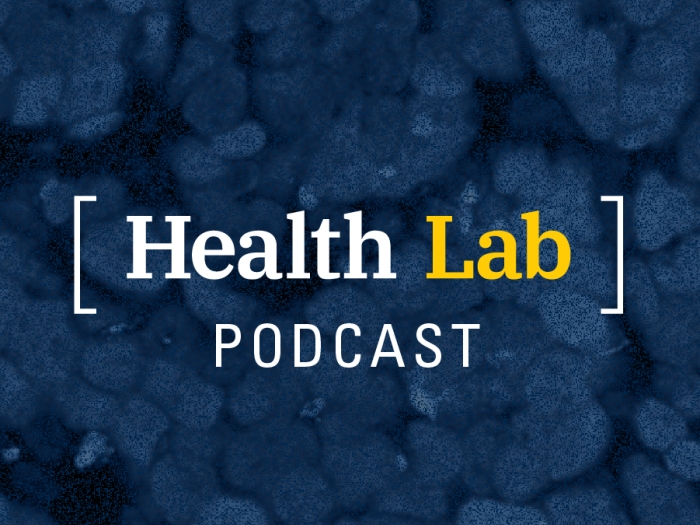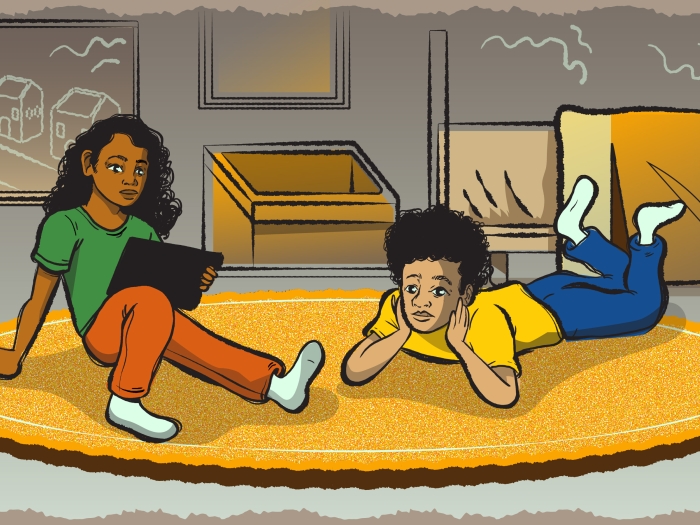A potential side effect from thoracic surgeries, and how it’s treated
5:00 AM
Author |

Phrenic neuropathy refers to damage to one or both left and right phrenic nerves located around the lungs.
These nerves control the left and right sides of the main muscle that you use for breathing: the diaphragm.
When the diaphragm contracts, it flattens out and expands the lung cavity, drawing in air and pushing the abdominal organs down.
However, when the phrenic nerve is damaged, it can become challenging for the diaphragm to move as intended, making it difficult to breathe.
While this condition can be treated, there’s little known about it.
A recent editorial by Sandra Hearn, M.D., a clinical associate professor of physical medicine and rehabilitation at University of Michigan Health, gives insight into what’s currently known about phrenic neuropathy and what still needs to be explored about the condition.
Top questions about phrenic neuropathy
What causes phrenic neuropathy?
Hearn: There are many different causes, which adds to the challenge of studying this nerve, as they can't all be found in a single clinical context for study.
The phrenic nerve can be directly injured in high force trauma, typically in the neck region.
Phrenic neuropathy can also be a complication of heart surgery, or any surgery involving the structures in the middle of the chest or the lungs.
Other times, it’s less obvious: it can arise as a manifestation of neuralgic amyotrophy, an immune-mediated inflammatory process that damages one or more nerves in the body, often triggered by an infection, a surgery, or another event that activates the immune system.
Neuralgic amyotrophy usually also involves limb nerves and can be recognized by the pattern of limb pain followed by weakness.
But it's possible for the phrenic nerve to be the only nerve affected, making the disease entity harder to recognize.
For some cases of phrenic neuropathy, a clear cause is never identified.
Many cases are minimally symptomatic or asymptomatic and are not diagnosed.
What are symptoms of phrenic neuropathy?
Hearn: Patients with phrenic neuropathy have impairments with breathing, because the main muscle that powers the act of breathing in has weakened.
Severity depends on the degree of nerve damage, whether both phrenic nerves are damaged or only one, as well as presence of other medical problems that affect breathing.
In the most severe cases, usually with co-morbid illness with intensive care unit (ICU) admission, people can't breathe independently and require ventilator support (“a breathing machine”) while awaiting recovery.
On the other end of the spectrum, people with mild phrenic neuropathy or with only one of the two nerves damaged may have no symptoms at all.
In fact, phrenic neuropathy can be found incidentally by surprise, as when someone gets a chest X-ray and doctors happen to notice that half the diaphragm is raised up and unable to flatten, in spite of a deep breath.
In cases in the middle of the spectrum, patients may have shortness of breath with certain activities that make the work of breathing harder: lying down, bending down, heavy exertion, and swimming.
Breathing when lying down takes a little more work for all of us, because the abdominal contents don’t experience the pull of gravity toward our feet and they rest against the diaphragm, creating resistance to contraction.
When our breathing muscles are healthy, we don’t notice this difference, but people with phrenic neuropathy might.
Along with positional shortness of breath, people with phrenic neuropathy may have sleep disordered breathing or difficulty performing sexual intercourse.
Other symptoms include fatigue, gastrointestinal disturbance and cough.
One particularly alarming symptom that can take patients and doctors by surprise is water immersion dyspnea, or shortness of breath in the water.
Being immersed in water increases the work of breathing.
Patients who are physically active and not routinely experiencing respiratory symptoms with land-based exercises may suddenly struggle to breathe when immersed in water, as with swimming and diving, due to the increased work of breathing in these circumstances.
This has occasionally led to near drownings and a need for bystander rescue, making it important for doctors to counsel patients who have had phrenic neuropathy—especially the infectious or inflammatory type—of this potential complication.
They should start water immersion or swimming in a safe environment.
What does treatment and recovery look like?
Hearn: From among patients who experience symptoms, many recover, but, as we describe in the editorial, the process takes time: an average of over one year, and over two to three years for some.
For patients with severe phrenic neuropathy that impacts their daily activity, surgical interventions are often considered.
Surgical interventions can include removal of scar tissue or other structures compressing the phrenic nerve, phrenic nerve repair, nerve transfer, diaphragm plication (immobilizing the diaphragm in a reasonably favorable position), and diaphragmatic pacing (implantation of a system that electrically stimulates the diaphragm to contract.)
Because we don’t know to what degree spontaneous recovery will occur, surgeons often wait about six months to see if there is evidence of improvement before considering surgical intervention.
More research in this area is needed to better identify who will benefit from surgery and who will do better with conservative management.
Conservative management focuses on physical therapy for diaphragm muscle training if there is some nerve connection to the muscle, as well as therapy to strengthen other muscles that assist with breathing.
Nocturnal positive pressure support can be helpful at night: this is a machine that assists with breathing at night, often using a mask-like interface.
A CPAP machine is a common example.
For people with obesity, weight loss can help reduce work of breathing by decreasing the pressure exerted by abdominal contents upon the diaphragm.
What are the challenges in researching a disorder like phrenic neuropathy?
Hearn: There are a lot of different causes and contexts for phrenic nerve injury.
This variety has made it difficult to study: cardiothoracic surgeons see the surgical complications, critical care physicians see the ones arising in the intensive care units, the outpatient physicians see the infectious immune-mediated ones.
These patients are different groups of people, often in different settings and with different goals.
The article we highlighted in our Editorial marks a step forward in research, as the authors were able to study a large group of patients with different types of phrenic neuropathy.
What new opportunities are on the research horizon?
Hearn: Neuromuscular ultrasound, which has evolved in recent years, is a powerful tool for visualizing nerves and muscles and, often, assessing their function.
It can be performed in the clinic or at bedside, without discomfort or pain.
It can be used dynamically to evaluate mobile structures, such as the diaphragm during the breathing cycle.
Further research will help us understand how to use this ultrasound technology to better assess phrenic neuropathy, including identifying who may benefit from surgical intervention.
Additional authors: Andrea J. Boon, M.D., Department of Physical Medicine and Rehabilitation, Mayo Clinic, Rochester, Minnesota
Paper cited: “Phrenic neuropathy: A different flavor of the same dish,” Muscle & Nerve. DOI: 10.1002/mus.28264
Sign up for Health Lab newsletters today. Get medical tips from top experts and learn about new scientific discoveries every week.
Sign up for the Health Lab Podcast. Add us wherever you listen to your favorite shows.

Explore a variety of health care news & stories by visiting the Health Lab home page for more articles.

Department of Communication at Michigan Medicine

Clinical Associate Professor
Want top health & research news weekly? Sign up for Health Lab’s newsletters today!





